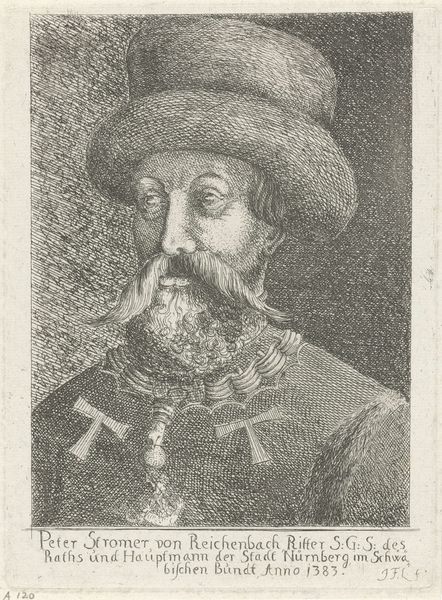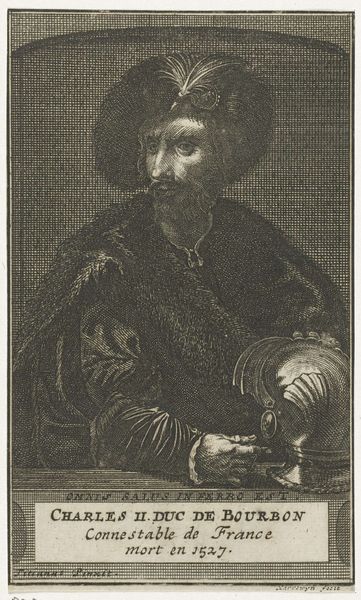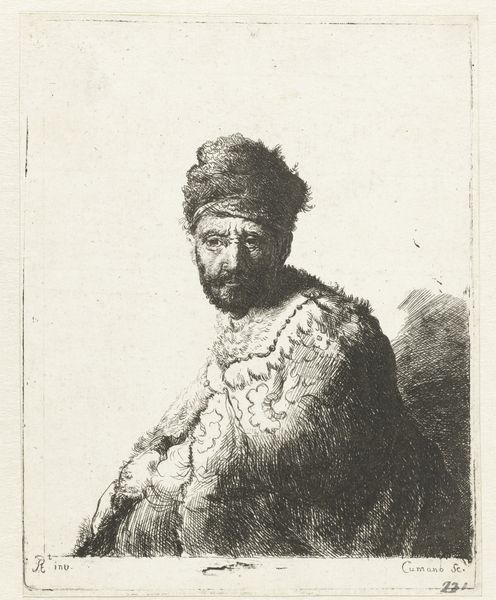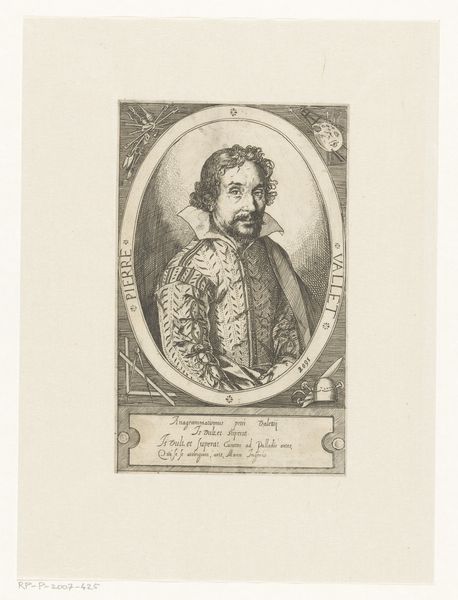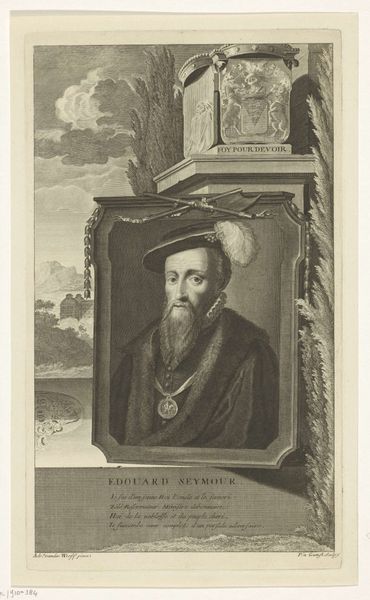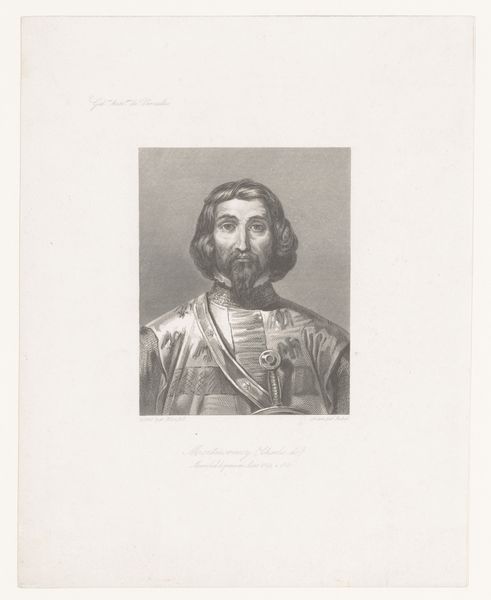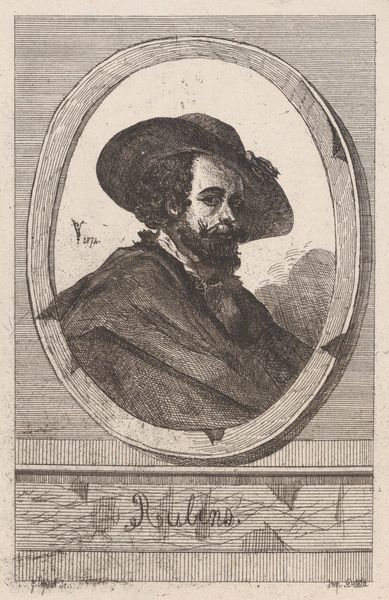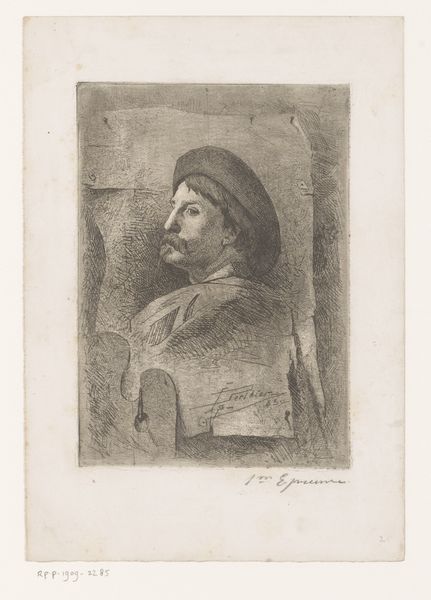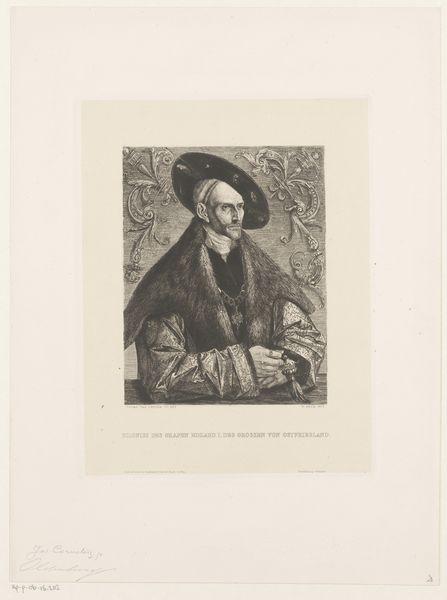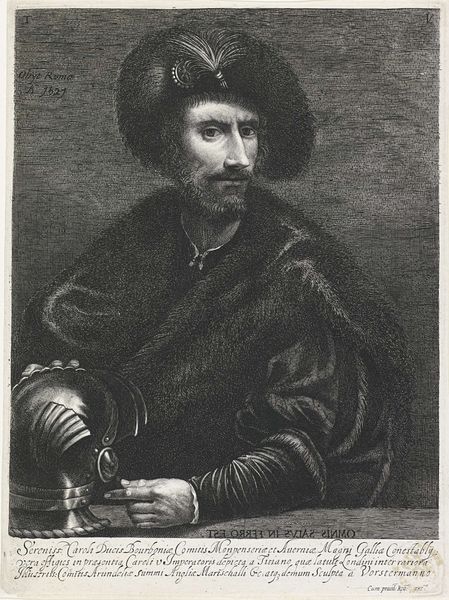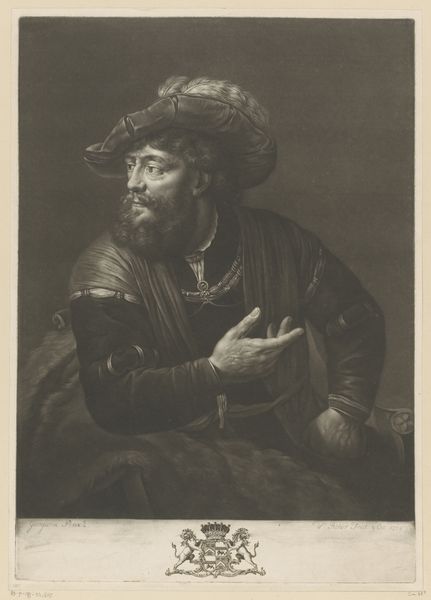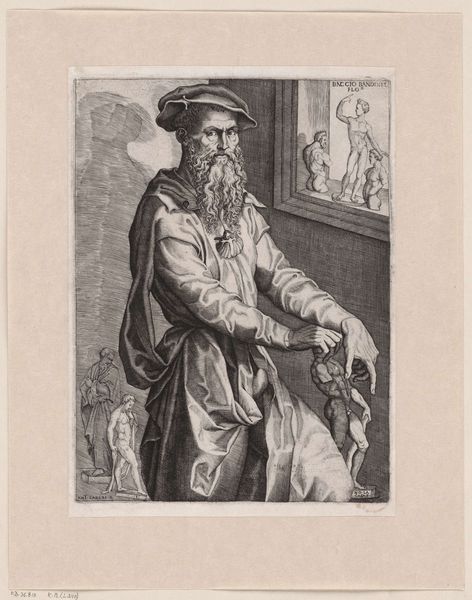
print, engraving
#
portrait
#
baroque
#
dutch-golden-age
# print
#
old engraving style
#
figuration
#
engraving
Dimensions: height 166 mm, width 144 mm
Copyright: Rijks Museum: Open Domain
Curator: Looking at this print, titled "Portret van Janus Secundus", executed between 1639 and 1643 by Pieter Rottermondt, I’m immediately struck by how much symbolism the artist uses in such a compact composition. What’s your take? Editor: It’s incredibly intense, isn't it? All those tight little lines create a really serious mood, like peering into a past that's determined to hold its secrets. His gaze follows you around the room, and he has his hand outstretched in some way; what do you think is going on with the gesture and the jewelry? Curator: That gesture is absolutely key. While the jewelry might denote his social status—perhaps a symbol of wealth or rank—it's secondary to the hands. They appear almost imploring or revealing, especially given the religious weight hands have held across centuries of art. There is a plea and offering mixed into one movement that cannot be easily untangled. Editor: Interesting. It feels almost performative to me. Like he's playing a role rather than revealing something authentic. The drapery behind him looks very regal and yet there’s this subtle vulnerability in the face, I think; what's he trying to portray? Curator: Considering that portraiture during the Dutch Golden Age often conveyed not just likeness but also virtues, ambitions, and societal roles, Rottermondt perhaps is presenting Janus as a figure of considerable gravity and maybe a little sadness too. His gaze might represent self-awareness, or the acknowledgement of both visible and unseen aspects. Editor: Right. But I can't shake the feeling he knows he's being watched, maybe judged even. It kind of diminishes the gravitas. It’s as though, as the viewer, you're somehow implicated in his performance. What else stands out? Curator: The lighting is quite telling, in the sense of how dramatic is. It not only models the form, creating strong contrasts and a heightened sense of realism typical of Baroque art, but also subtly reinforces Janus's importance in contrast with what is a fairly stark background in parts. I'm very interested in how the engraver decided what to conceal in the shadows, as opposed to what is shown in plain sight. Editor: The technical skill is pretty stunning. So intricate, almost like looking at a really old photograph instead of engraving. Thanks for highlighting the symbolic weight here—gives me a richer appreciation. Curator: Agreed; considering its status as a printed image, it manages to compress layers of artistic meaning into its dense linework. It encourages us to really contemplate what makes an artwork powerful over time.
Comments
No comments
Be the first to comment and join the conversation on the ultimate creative platform.
